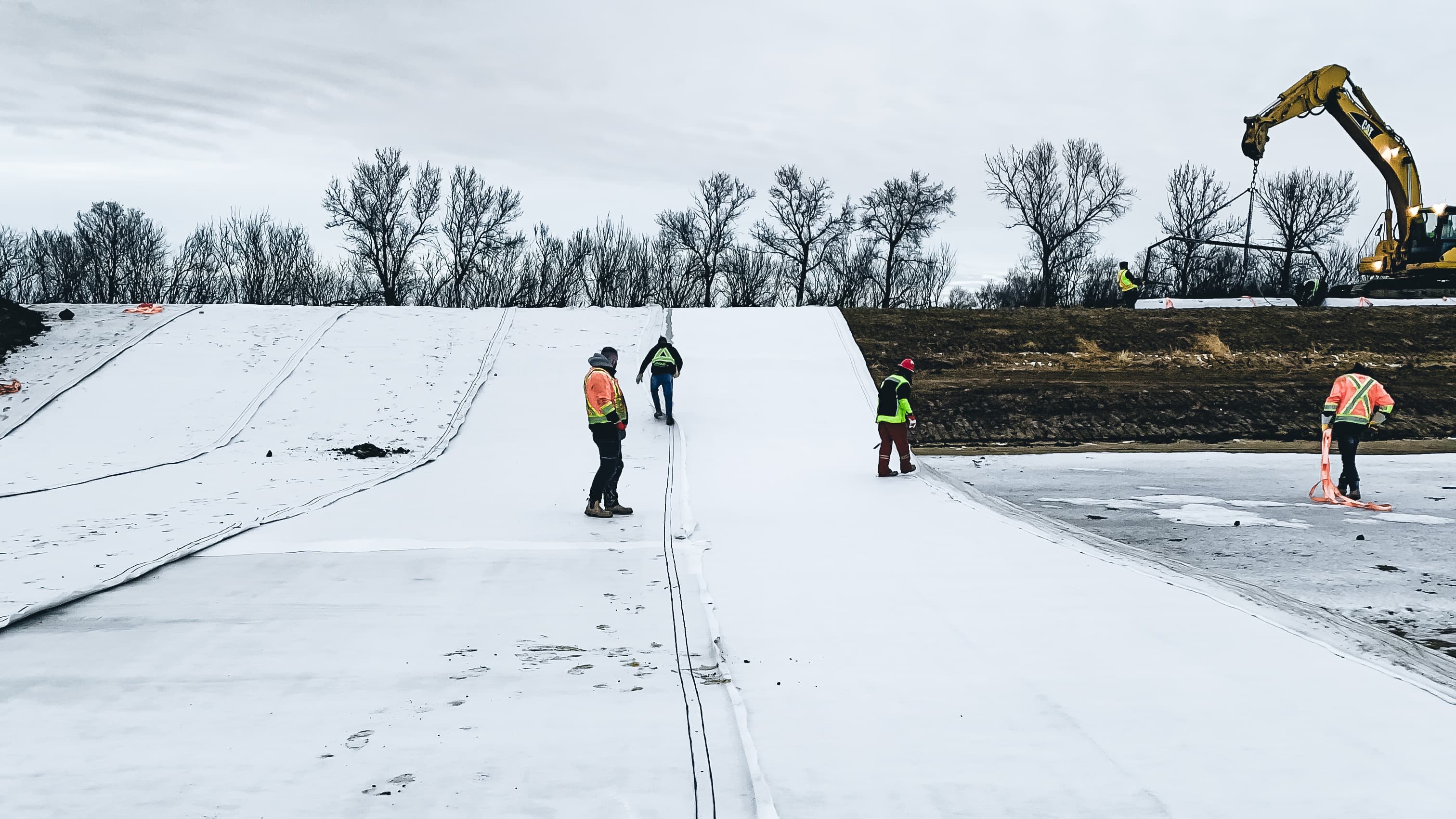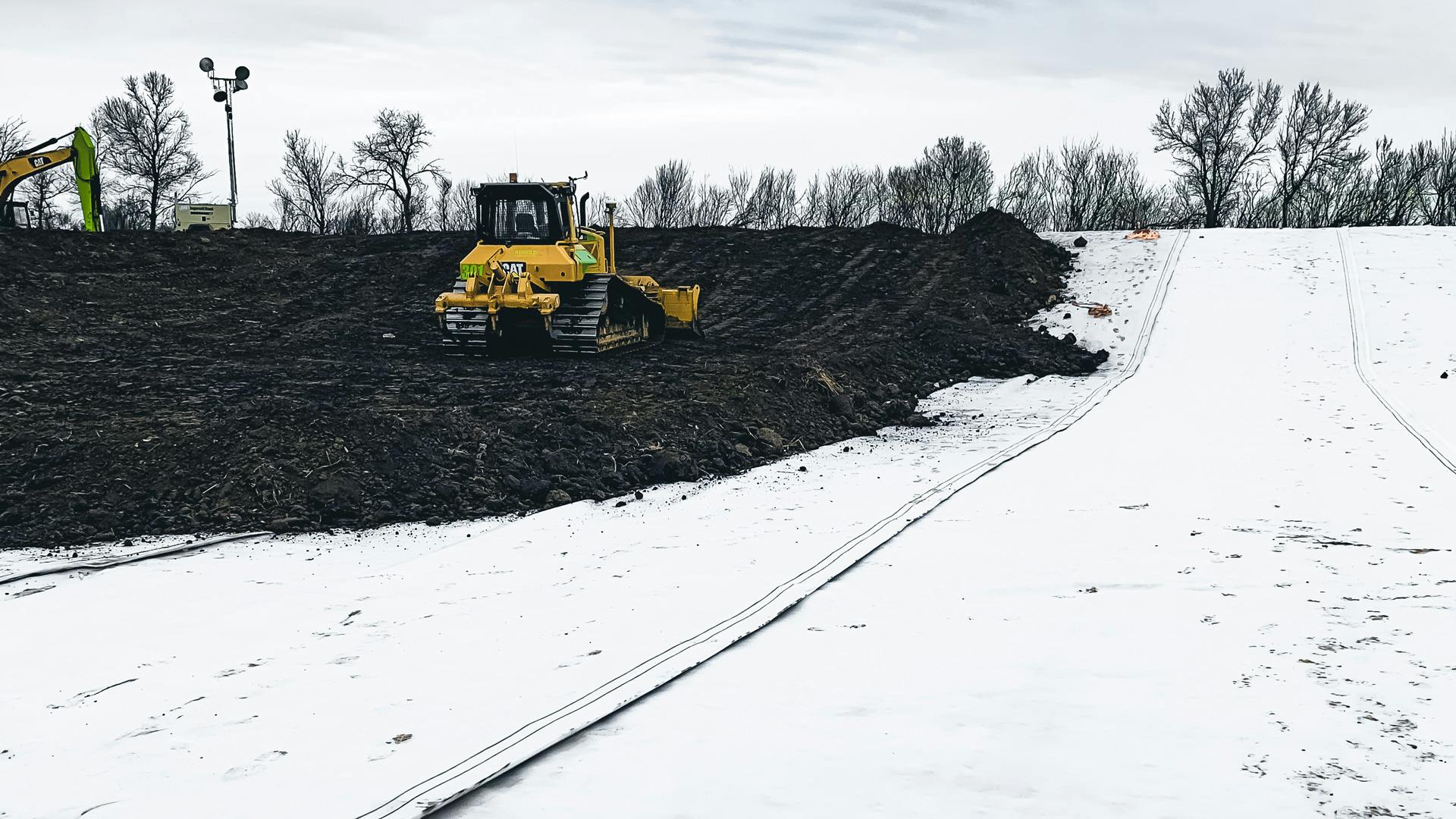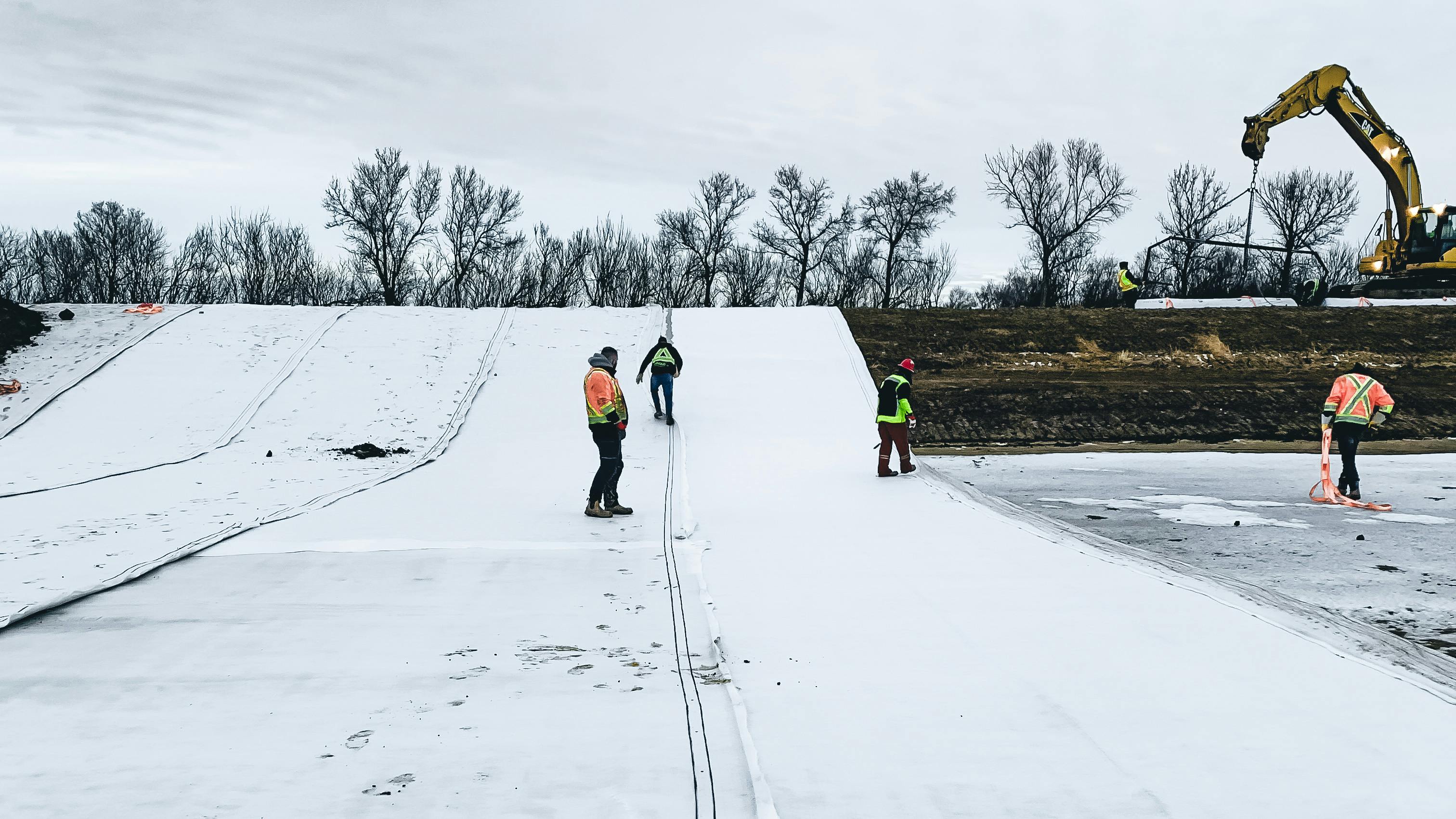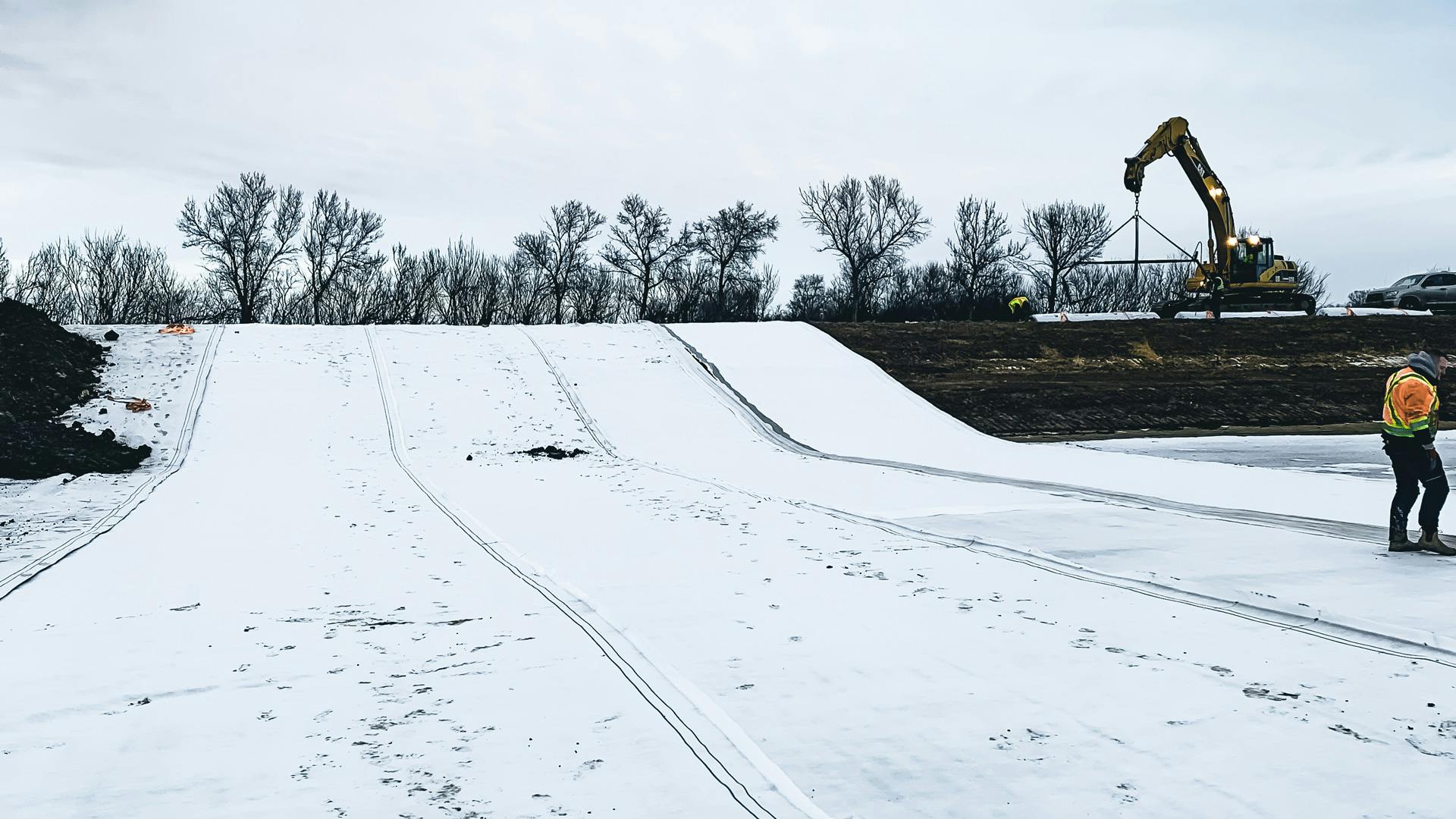
Industries
Sewage lagoon upgrade using geosynthetic clay liners
Overview
The Water Security Agency (WSA) required the village of Conquest to make improvements to their existing undersized sewage lagoon. The primary treatment cell had adequate treatment capacity, but the secondary treatment storage volume was inadequate. Catterall & Wright completed the design of an additional secondary treatment cell. The new cell balanced the primary and secondary treatment capacity while meeting the WSA requirements.
Challenge
Construction of a new clay-lined secondary lagoon cell began in the spring of 2020. The initial geotechnical investigation did not identify a high groundwater table and indicated that the in-situ material would be suitable for clay liner construction. However, during the first few weeks of construction, the contractor encountered high groundwater levels and the soil found on site contained silt and sand, making it unusable as a clay liner.
An alternative liner needed to be found. Through consultation with the engineer, contractor, and Solmax, it was determined that a geosynthetic clay liner (GCL) would be the most economical option for Conquest. The GCL allowed for installation in freezing temperatures and would not require a permanent dewatering system.
Catterall & Wright worked closely with Solmax to design a GCL system for the Conquest lagoon.
Solution
Solmax performed chemical compatibility testing, utilizing the industry standard ASTM D 6766 with BENTOLINER® CAR FL over several months using the lagoon site groundwater and sewage water chemistry. Due to the chemical makeup of the water, a bentonite/polymer formulated GCL was required. In June of 2021, the testing was completed on BENTOLINER CAR FL, and it provided the necessary results and met the needs of the site conditions.
The project included the installation of 15,120 square meters of BENTOLINER CAR FL GCL on a semi-frozen, smooth subgrade surface to create a stable foundation to work on. The GCL overlap requirements were increased to 0.5 meters for minor differential settlement.
Several benefits of using the GCL included cost savings of not having to import clay to the project. BENTOLINER has also reduced operational maintenance costs for the owner, as this system does not require a permanent dewatering system to operate.



Explore more case studies
View allMeeting subgrade stabilization challenges with MIRAFI
Utilizing MIRAFI RS380i geotextile fabric, this project overcame poor subgrade conditions to construct four commercial buildings with stable platforms for parking lots and loading docks.
Biogas cover turns palm oil waste into fuel in Malaysia
Cenergi transforms POME into renewable biogas in Malaysia, using GSE geomembranes. This project reduced GHG and the approach highlights innovation in waste recycling and contribution to renewable energy goals.
IMAX parking lot's innovative stormwater system with MIRAFI
In 2012, Mississauga's IMAX parking lot implemented a low impact development system to manage stormwater, enhancing water quality and maintaining pavement integrity.